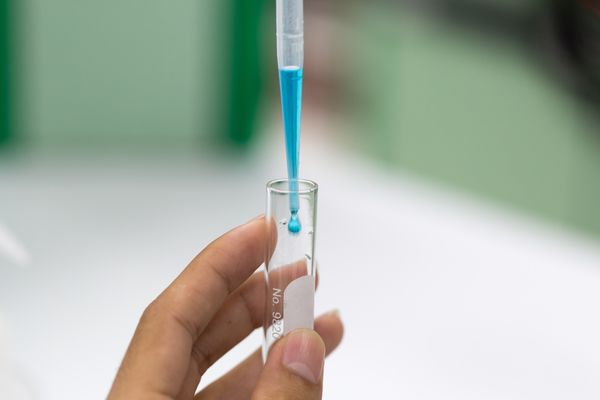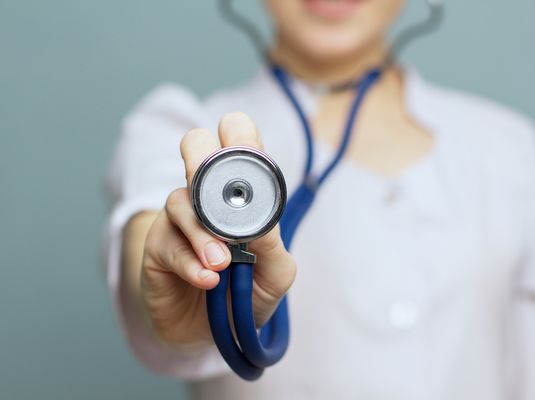19.2.4
Gene Therapy
Gene Therapy
Gene Therapy
Gene therapy is a genetic engineering technique used to cure disease.


Procedure
Procedure
- Gene therapy involves the introduction of a target gene (the gene that confers a beneficial trait) into the genome.
- The genome has been transformed.
- The target gene is then transcribed and translated to produce the desired protein.
- The protein counteracts the effect of a disease that is caused by a mutation.


Allele interactions
Allele interactions
- Gene therapy is used to treat diseases that are caused by a mutation in a gene.
- The way that gene therapy is used depends on the allele interactions of the gene that causes the disease.
- If the mutation is in the recessive allele, a wild-type (typical of the species) dominant allele is inserted into the genome. The dominant allele counteracts the mutant alleles.
- If the mutation is in the dominant allele, an allele that 'silences' the mutant allele is inserted in the genome.


Vectors
Vectors
- Gene therapy uses vectors to insert the target gene into the genome.
- Vectors transport allow the gene to be taken up by the cells of the host. The genome is then transformed.
- Types of vector include plasmids, bacteriophages, liposomes, & naked DNA.
- When choosing a vector, you need to consider factors such as the target cell, size of the gene to be inserted, and any immune response that may be caused.
- For example, bacteriophages are a type of virus so may cause an immune response. They may, however, be able to deliver larger genes than naked DNA. Naked DNA is sensitive and easily broken down.


Types of gene therapy
Types of gene therapy
- There are two types of gene therapy -
- Somatic therapy - altering of alleles in adult body cells. This is a short term therapy and needs repeating.
- Germline therapy - altering of alleles in sex cells. This is illegal in humans.


Example - cystic fibrosis
Example - cystic fibrosis
- Cystic fibrosis is caused by a mutation in the CFTR gene.
- The CFTR gene codes for a chloride ion channel that or transports Cl- ions out of cells and into mucus.
- Cl- ions lower the water potential of mucus. This causes water to leaves cells and enter mucus by osmosis.
- So, when the channel is mutated Cl- ions do not enter mucus. Mucus becomes thick & sticky.
- This leads to problems such as a build-up of mucus in the lungs, blockage of digestive system ducts, and clogging of the cervical canal with mucus.


Cystic fibrosis - gene therapy
Cystic fibrosis - gene therapy
- Treating cystic fibrosis with gene therapy would involve delivering a correctly function CFTR protein to affected cells.
- This therapy is the subject of multiple clinical trials and has shown some promise.
1Cell Structure
1.1Cell Structure
1.1.1Studying Cells - Microscopes
1.1.2Introduction to Eukaryotic & Prokaryotic Cells
1.1.3Ultrastructure of Eukaryotic Cells
1.1.4Ultrastructure of Eukaryotic Cells 2
1.1.5Ultrastructure of Eukaryotic Cells 3
1.1.6Prokaryotic Cells
1.1.7Viruses
1.1.8End of Topic Test - Cell Structure
1.1.9Exam-Style Question - Microscopes
1.1.10A-A* (AO2/3) - Cell Structure
2Biological Molecules
2.1Testing for Biological Modules
2.2Carbohydrates & Lipids
2.3Proteins
3Enzymes
4Cell Membranes & Transport
4.1Biological Membranes
5The Mitotic Cell Cycle
6Nucleic Acids & Protein Synthesis
6.1Nucleic Acids
7Transport in Plants
8Transport in Mammals
8.1Circulatory System
8.2Transport of Oxygen & Carbon Dioxide
9Gas Exchange
9.1Gas Exchange System
10Infectious Diseases
10.1Infectious Diseases
10.2Antibiotics
11Immunity
12Energy & Respiration (A2 Only)
13Photosynthesis (A2 Only)
14Homeostasis (A2 Only)
14.1Homeostasis
14.2The Kidney
14.3Cell Signalling
14.4Blood Glucose Concentration
14.5Homeostasis in Plants
15Control & Coordination (A2 Only)
15.1Control & Coordination in Mammals
15.1.1Neurones
15.1.2Receptors
15.1.3Taste
15.1.4Reflexes
15.1.5Action Potentials
15.1.6Saltatory Conduction
15.1.7Synapses
15.1.8Cholinergic Synnapses
15.1.9Neuromuscular Junction
15.1.10Skeletal Muscle
15.1.11Sliding Filament Theory Contraction
15.1.12Sliding Filament Theory Contraction 2
15.1.13Menstruation
15.1.14Contraceptive Pill
15.2Control & Co-Ordination in Plants
16Inherited Change (A2 Only)
16.1Passage of Information to Offspring
16.2Genes & Phenotype
17Selection & Evolution (A2 Only)
17.2Natural & Artificial Selection
18Classification & Conservation (A2 Only)
18.1Biodiversity
18.2Classification
19Genetic Technology (A2 Only)
19.1Manipulating Genomes
19.2Genetic Technology Applied to Medicine
19.3Genetically Modified Organisms in Agriculture
Jump to other topics
1Cell Structure
1.1Cell Structure
1.1.1Studying Cells - Microscopes
1.1.2Introduction to Eukaryotic & Prokaryotic Cells
1.1.3Ultrastructure of Eukaryotic Cells
1.1.4Ultrastructure of Eukaryotic Cells 2
1.1.5Ultrastructure of Eukaryotic Cells 3
1.1.6Prokaryotic Cells
1.1.7Viruses
1.1.8End of Topic Test - Cell Structure
1.1.9Exam-Style Question - Microscopes
1.1.10A-A* (AO2/3) - Cell Structure
2Biological Molecules
2.1Testing for Biological Modules
2.2Carbohydrates & Lipids
2.3Proteins
3Enzymes
4Cell Membranes & Transport
4.1Biological Membranes
5The Mitotic Cell Cycle
6Nucleic Acids & Protein Synthesis
6.1Nucleic Acids
7Transport in Plants
8Transport in Mammals
8.1Circulatory System
8.2Transport of Oxygen & Carbon Dioxide
9Gas Exchange
9.1Gas Exchange System
10Infectious Diseases
10.1Infectious Diseases
10.2Antibiotics
11Immunity
12Energy & Respiration (A2 Only)
13Photosynthesis (A2 Only)
14Homeostasis (A2 Only)
14.1Homeostasis
14.2The Kidney
14.3Cell Signalling
14.4Blood Glucose Concentration
14.5Homeostasis in Plants
15Control & Coordination (A2 Only)
15.1Control & Coordination in Mammals
15.1.1Neurones
15.1.2Receptors
15.1.3Taste
15.1.4Reflexes
15.1.5Action Potentials
15.1.6Saltatory Conduction
15.1.7Synapses
15.1.8Cholinergic Synnapses
15.1.9Neuromuscular Junction
15.1.10Skeletal Muscle
15.1.11Sliding Filament Theory Contraction
15.1.12Sliding Filament Theory Contraction 2
15.1.13Menstruation
15.1.14Contraceptive Pill
15.2Control & Co-Ordination in Plants
16Inherited Change (A2 Only)
16.1Passage of Information to Offspring
16.2Genes & Phenotype
17Selection & Evolution (A2 Only)
17.2Natural & Artificial Selection
18Classification & Conservation (A2 Only)
18.1Biodiversity
18.2Classification
19Genetic Technology (A2 Only)
19.1Manipulating Genomes
19.2Genetic Technology Applied to Medicine
19.3Genetically Modified Organisms in Agriculture
Unlock your full potential with Seneca Premium
Unlimited access to 10,000+ open-ended exam questions
Mini-mock exams based on your study history
Unlock 800+ premium courses & e-books